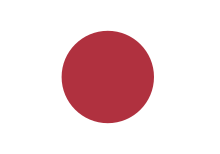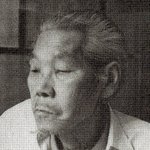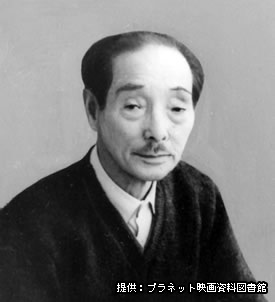
Compared to China, Japan was a lot more ahead of the curve, beginning their experiments with crude animation around 1907, a full ten years before the Wan Brothers even saw Fleischer’s work and seventeen before they began working on anything. This isn’t that surprising; Japan always had a rich tradition of theatre, puppetry and even magic lantern shows, and of course there’s a wide and diverse catalogue of stories and history to draw from. The very first recorded Japanese animation was called
Katsudō Shashin (活動写真, "motion picture"), also sometimes known as
The Matsumoto Fragment, after Natsuki Matsumoto, the iconography expert who discovered it. It runs for a mere three seconds, and features a boy writing characters on a wall, then turning, bowing and removing his hat.
Although the film - film fragment really - can’t be categorically dated, it is believed to have been created before 1912, and again although its creator is a mystery, it places the film very close to being the first animation, ahead of the likes of Emile Cohl and Winsor McCay. Cohl indeed has the distinction of having been the first to have had one of his animations play in Japanese theatres, this being 1911’s
Nipper’s Transformation.
 Ōten Shimokawa (1892-1973)
Ōten Shimokawa (1892-1973)
One of the “big three” godfathers of Japanese anime, Shimokawa worked in Tokyo as a political cartoonist and manga artist. When asked by Tenkatsu Production Company to create a short film animation, he tried out several unique techniques, such as using chalk or white wax on a dark board background to draw characters, rubbing out portions to be animated and drawing with ink directly onto film, whiting out animated portions. This helped save on costs, and also allowed the animation to be completed more rapidly than normal, resulting in The
Story of the Concierge Mukuzo Imokawa (芋川椋三玄関番の巻 or 芋川椋三玄関番之巻, Imokawa Mukuzō Genkanban no Maki) which was to be shown in theatres, therefore making it the first Japanese animation to be seen by the public. Shimokawa’s other works, however, precede it, such as
凸坊新画帳・名案の失敗 (Dekobō shingachō – Meian no shippai, Bumpy new picture book – Failure of a great plan) and
Otogawa Shinzo Gate of the Entrance, though these were never shown publicly.
Bad health dogged Shimokawa’s life and cut short his career, forcing him to take breaks from work and when he returned it was not as an animator but as a consultant and editor. Nonetheless, for producing Japan’s first proper anime film, and for his work in the early part of his life, he is considered one of the fathers of Japanese anime.
 Jun'ichi Kōuchi (1886-1970)
Jun'ichi Kōuchi (1886-1970)
Another who can claim the title of godfather of Japanese anime, he does seem to have been almost a reluctant animator, preferring drawing political cartoons, as he began his career in 1912 with
Tokyo Comic. He was commissioned to create a feature animation,
The Dull Sword (なまくら刀), in 1917, but when the company decided to get out of animation he returned to drawing political cartoons, drawing (sorry) the attention of one of the House of Representatives, who was impressed with his work and engaged him to draw cartoons promoting his party. Kouchi’s last animation was
Cut up Serpent (ちょん切れ蛇) in 1931, after which he again went back to drawing political cartoons for the papers.
 Seitarō Kitayama (1888-1945)
Seitarō Kitayama (1888-1945)
As an aside, though not relevant, how interesting to have both been born and died in such, as his neighbours the Chinese would say, interesting times. 1888, the year of Kitayama’s birth, was the year the feared Jack the Ripper stalked the streets of London, murdering and never being caught, and of course 1945 was a bad year for Japan, the year the Second World War ended with Hiroshima and Nagasaki both being all but obliterated by American atomic bombs. But away with such things, with which we are not concerned here.
Something of a patron of young artists, Kitayama would purchase art materials for promising new talent, host galleries and shows, and publish their work in catalogues. His first animation,
Monkey and Crabs (猿蟹合戦), also came out in 1917, which seems to have been something of the age of discovery for Japanese animators. Working with other artists, Kitayama helped develop and propel the nascent industry, and built a studio in 1921. This, however, fell victim to a huge earthquake two years later, and Kitayama moved to Osaka, where he took a job as a cameraman, never more returning to animation.
Here’s, against all odds, the video of that animation. Kind of odd, when you look at the translation, that the characters seem to use bullying and intimidation against first the seed (“Hurry up and grow, seed, or I’ll destroy you with my pincer!”) then the tree and then the fruit, threatening them each time. Talk about impatience! The monkey looks decidedly human, so I guess he just drew a human body and stuck a monkey head on top of it. It’s really not that bad, considering what the likes of Felix was still doing nearly ten years after this. You have to give him credit too for realism, in that the crab, when chasing after the monkey, who has robbed the fruit out of their tree, runs sideways. Nice touch. Dark, too: the monkey kills the crab (unintentionally, I think) and his son vows revenge on his father’s killer. How traditional eh?
The son seeks the aid of some weird individuals, who may be monks, or gods, and they attack the monkey in his house. We get a good old-fashioned Japanese swordfight, which is choreographed okay, but it’s three to one and the monkey is soon defeated.
With the destruction of Kitayama’s studio in 1923 almost all of the films from pre-war Japan were lost, so it’s time to move on, as we’ve spoken of all we can up to this period.